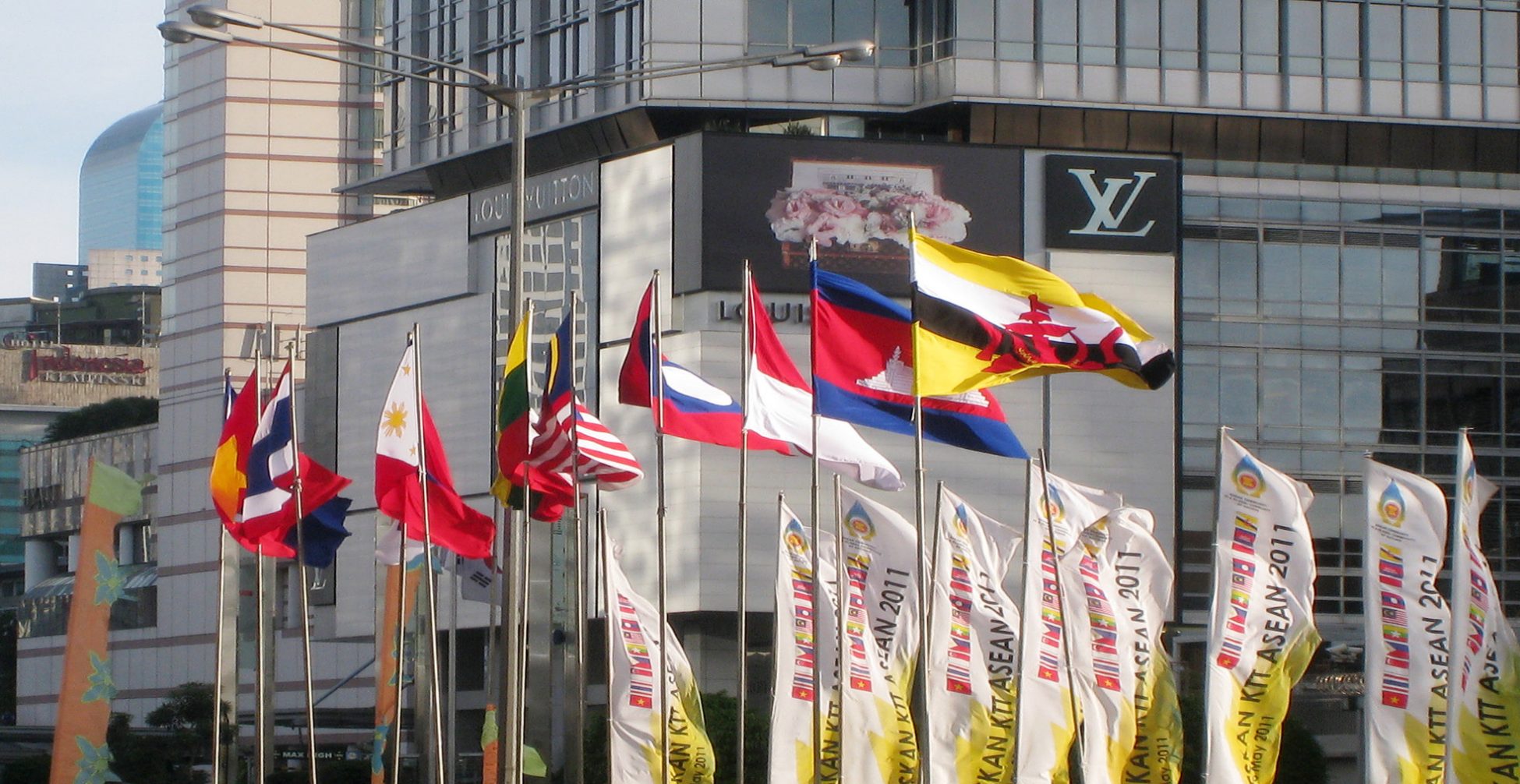ASEAN at 50: More Success Likely, In Spite of Itself

Doubts about ASEAN’s coherence and relevance lingered in the midst of its 50th birthday celebrations earlier this month, but there are positive indications for future economic integration.
Commentary on ASEAN’s 50th birthday has been largely congratulatory, and deservedly so. Observers have recalled that back in 1967 there were apprehensions about the possible spread of communism further into Southeast Asia, as well as tensions between Indonesia and Malaysia, between Singapore and Malaysia, and between Vietnam and the non-communist nations of the region.
ASEAN, starting with its five founding members (Indonesia, Malaysia, Singapore, Thailand and the Philippines), and then later with the addition of Brunei, Cambodia, Laos, Myanmar and Vietnam, has done much to foster a sense of community. Of course, there are disagreements among the member states, but generally there’s an effort to prevent tensions from getting out of hand. ASEAN has had some success in projecting a collective identity internationally. It has also benefited from perceptions that it’s been a region of strong economic growth, in contrast to much of the rest of the world.
In recent times, there’s been more questioning of ASEAN’s coherence, its economic course and its relevance as a force in the political and security affairs of the wider region. This is justified. Economic growth rates in the member countries are now decidedly mixed. ASEAN governments have been slow in developing joint positions on key economic and other policy challenges. A marked failure has been ASEAN’s inability to respond with clarity and force to China’s assertiveness in the South China Sea, including at the ASEAN Regional Forum and related meetings in Manila earlier this month. China’s march as the emerging regional hegemon rolls on, aided and abetted by Cambodia and Laos, which risk sliding into roles as Chinese satrapies.
The prospects for ASEAN to recover momentum as a vehicle for collective progress and regional influence are cloudy at best.
Developments within several of the major ASEAN member states have caused them to be domestically preoccupied. Malaysia is grappling with the import of the 1MDB corruption allegations swirling around Prime Minister Najib Razak and his government, and sectarian and racist bigotry is on the rise in the political and social sphere. Thailand has been in something of a time warp since reverting to military rule in 2014 and has yet to work out a sustainable equilibrium between its principal national institutions. Myanmar’s governance remains in transition, and hopes of fully democratic rule are as yet unfulfilled. Indonesia has done little since the election of President Joko Widodo in 2014 to assert what one might think should be its natural regional leadership role. It’s hard to avoid the conclusion that ASEAN as a grouping is in a state of drift.
The good news is that economic integration within ASEAN is likely to continue, albeit driven more by the private sector and demographic trends than by government fiat.
Across the ASEAN economies, state-owned enterprises play a major role, often drawing on their government links to develop their business. Within the private sector, much of the business activity in the region is in the hands of ethnic Chinese who are nationals of the ASEAN countries where they’re based. Through dialect group and family networks, their reach into other ASEAN economies—and China and elsewhere—is enhanced. Thus we see Singaporean and Malaysian banks with branches around ASEAN. Thailand’s Central Department Store group has established itself in Indonesia. Thailand’s Charoen Pokphand conglomerate has agribusiness, retail and telecommunications operations across ASEAN. One can expect these business networks to foster the development of an integrated ASEAN economy, as well as, in time, the harmonisation of regulatory structures.
Demographic trends, along with labour market forces and porous borders, are already increasing people movements within ASEAN. Thailand, in particular, has seen an influx of people from Myanmar, Cambodia and Vietnam, estimated to total 2 million or more. The UN classifies Thailand as an ‘aging society’, and the World Bank predicts a contraction of the working-age population of about 10 per cent between 2010 and 2040. Malaysia is estimated to have more than 3 million foreign workers, most having ‘migrated’ illegally from Indonesia, the Philippines and Myanmar, along with a considerable number of refugees and asylum seekers. Singapore has a very low birthrate and relies heavily on foreign workers, notably professionals from Malaysia and Indonesia. Over time, such movements can be expected to bring about closer personal and economic links between ASEAN countries, notwithstanding the challenges of legitimising the status of the ‘migrants’.
Enhanced connectivity across ASEAN, encouraged by improved transport links, along with the tourism and business flows supported by increased prosperity, will assist in developing mutual awareness and in all likelihood a greater sense of regional solidarity.
To make real progress, including in the regional political and security spheres, ASEAN governments will individually have to lift their sights above their internal preoccupations. Among the challenges ASEAN faces as a region, China’s rise, which presents a threat as well as opportunities, is the biggest. Indonesia and Vietnam will be critical in addressing this: each has a robust sense of its own independence and a historical wariness about China.
Miles Kupa has served as Australia’s ambassador to Thailand and the Philippines and high commissioner to Singapore and Malaysia. He is the immediate past vice-president of AIIA ACT Branch.
This article was originally published on the The Strategist on 22 August 2017. It is republished with permission.





